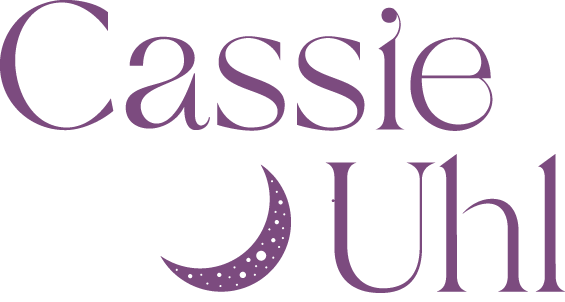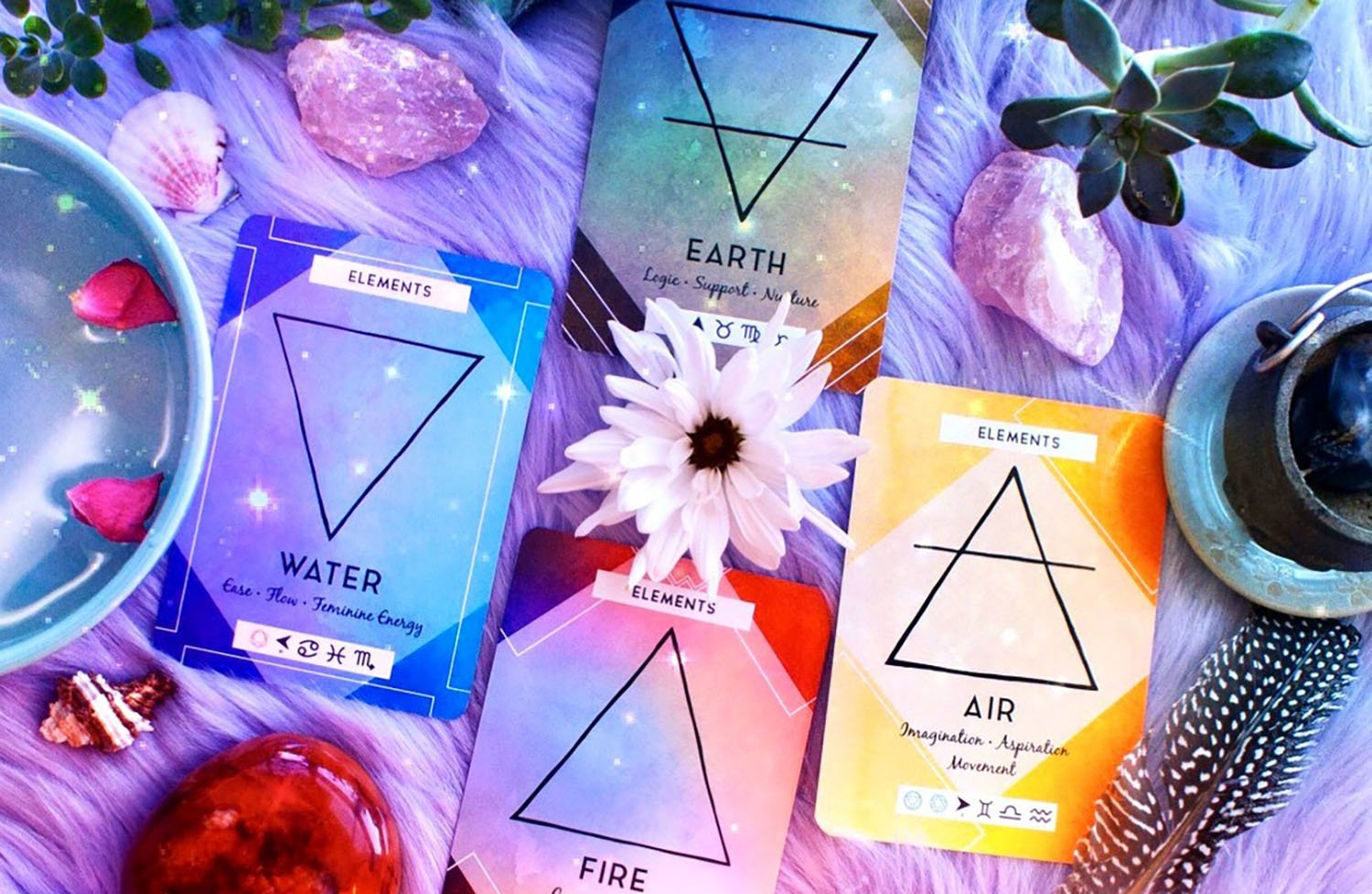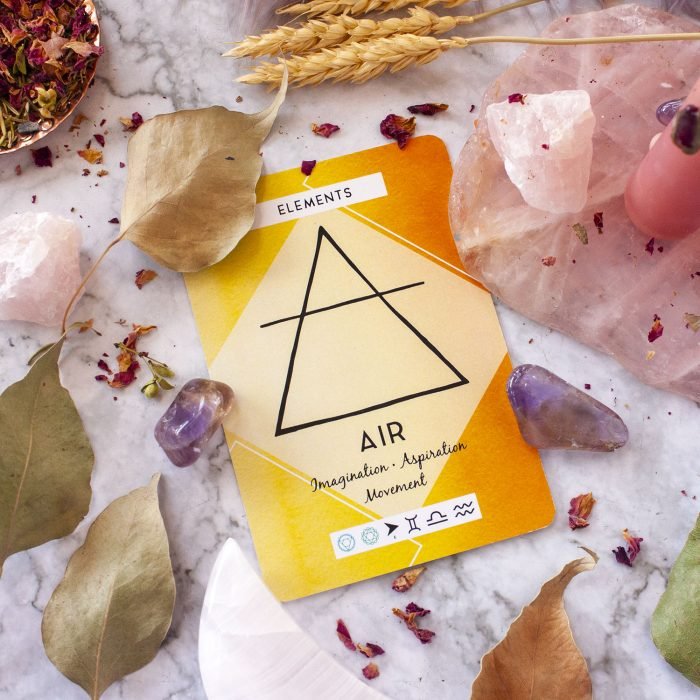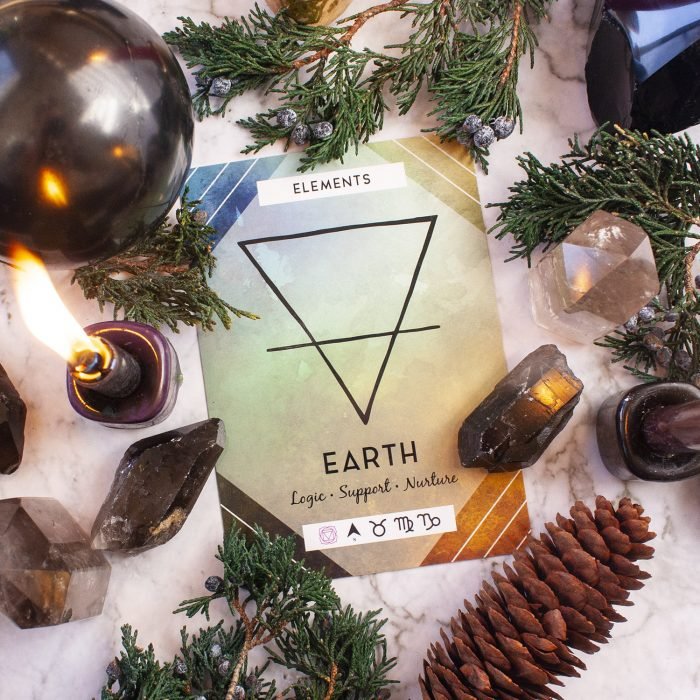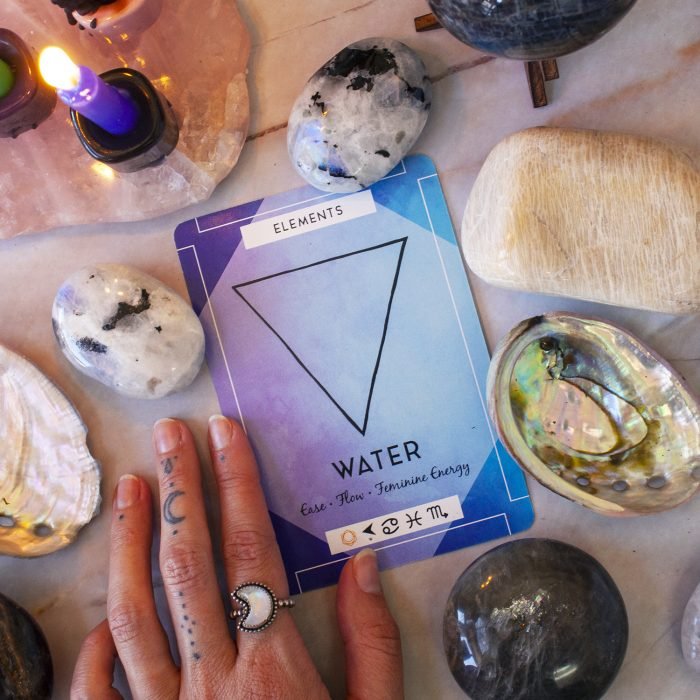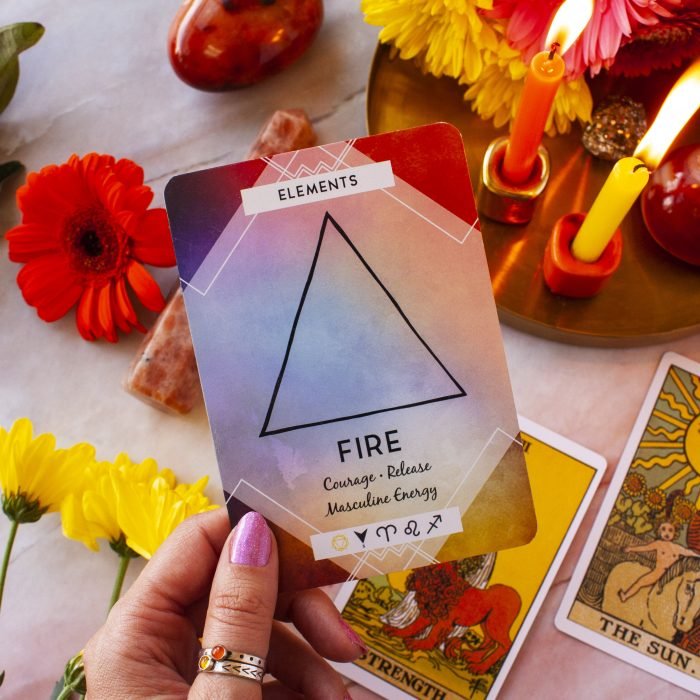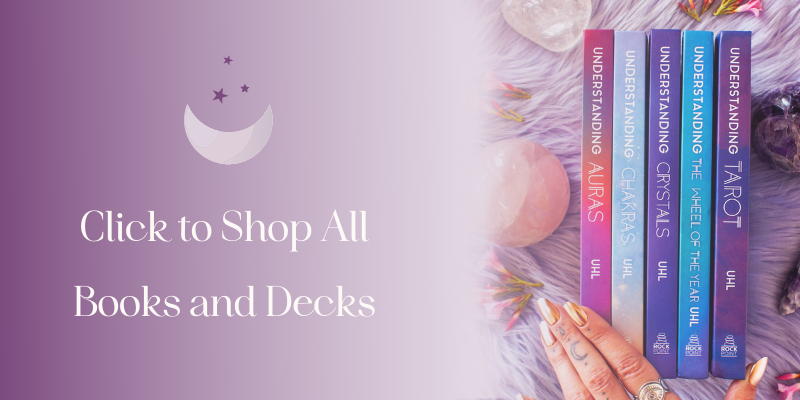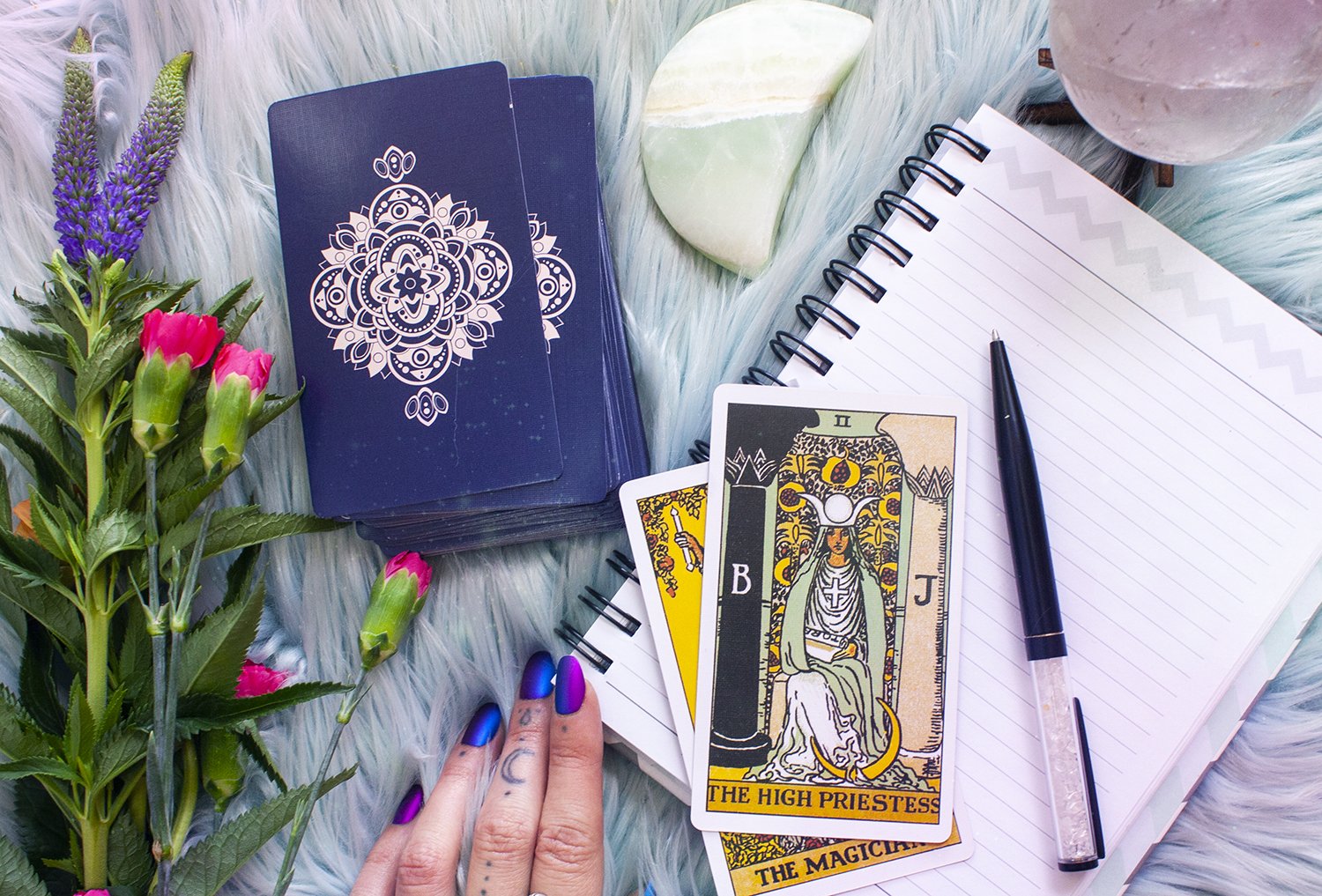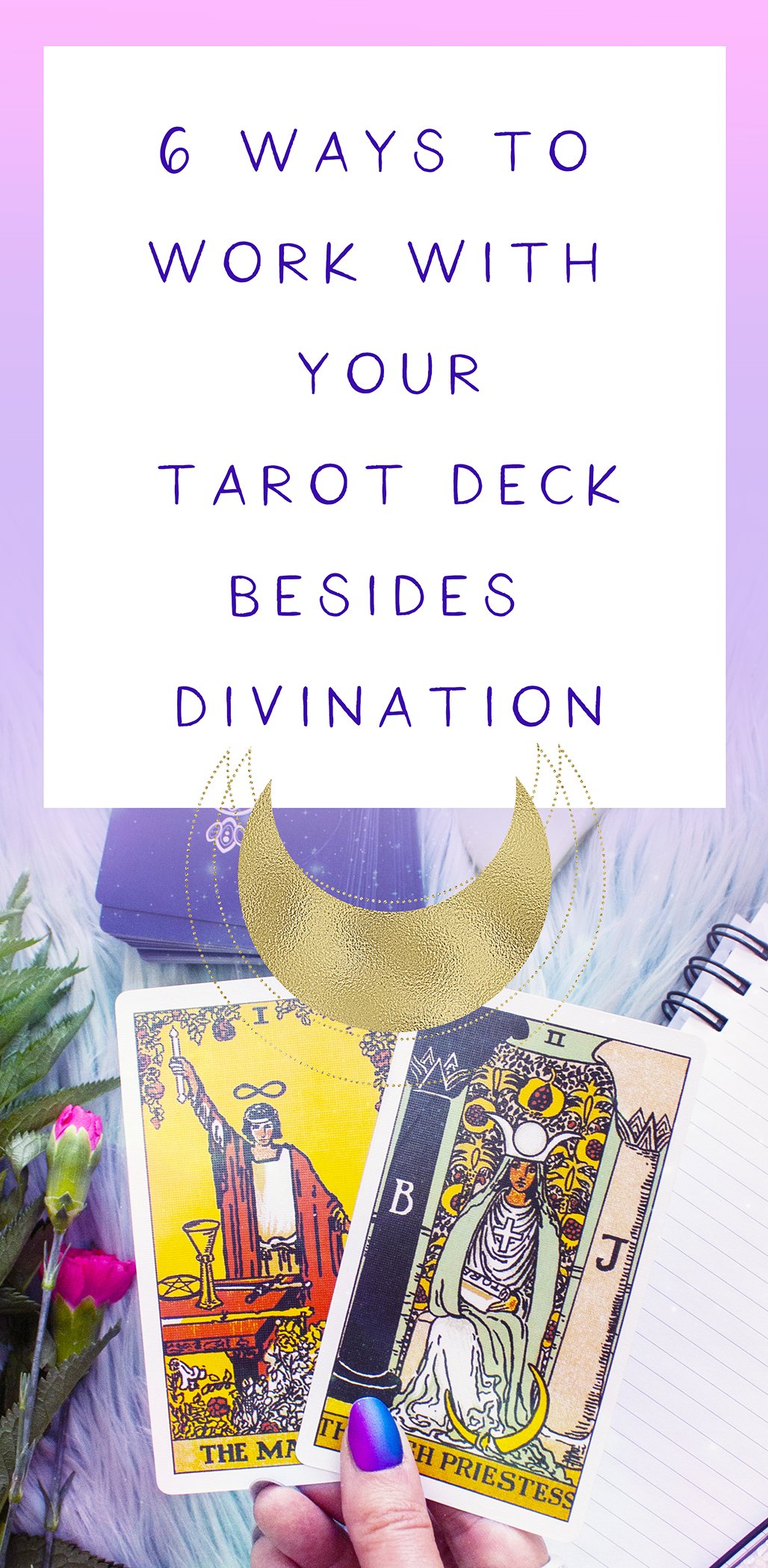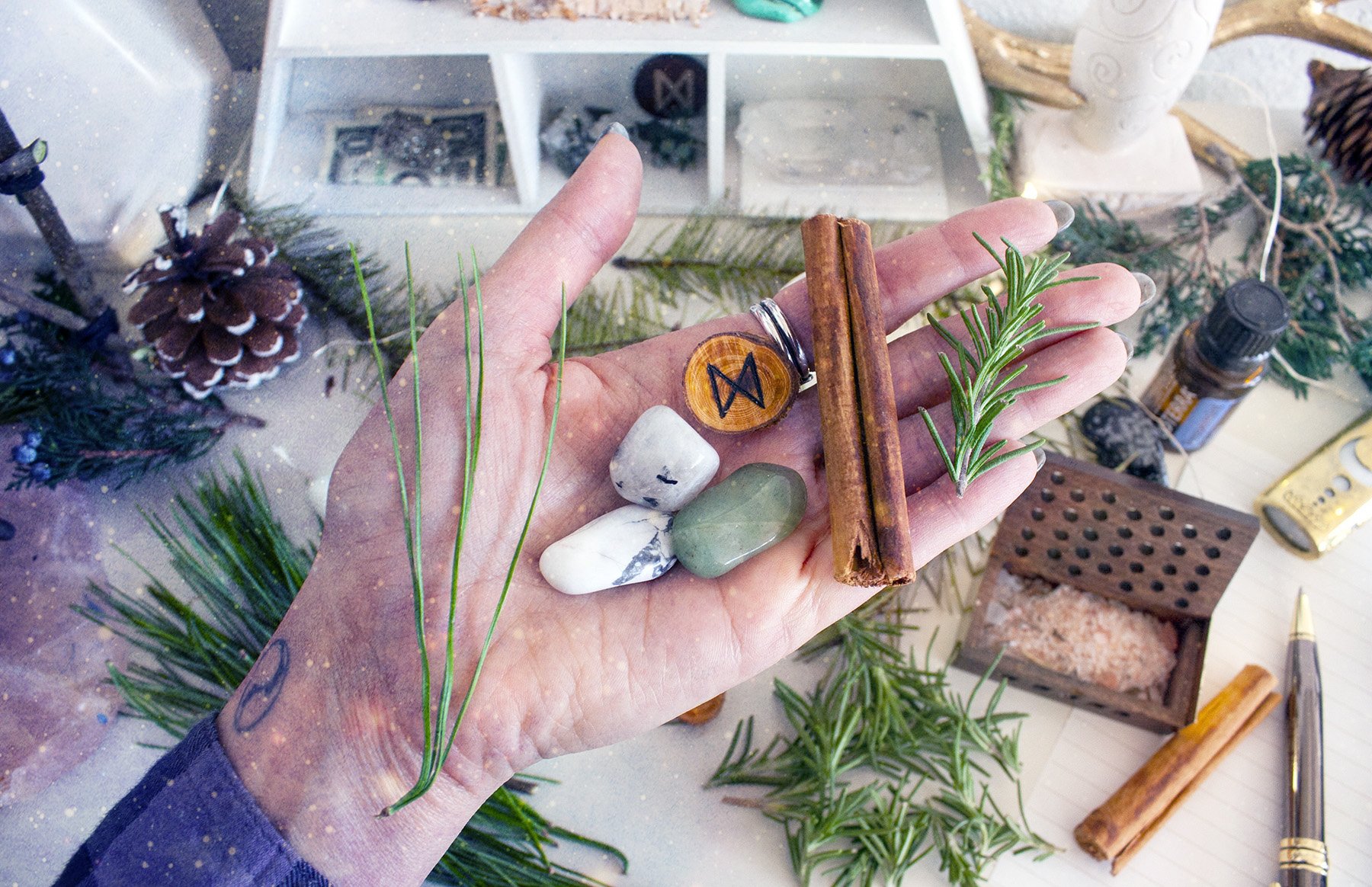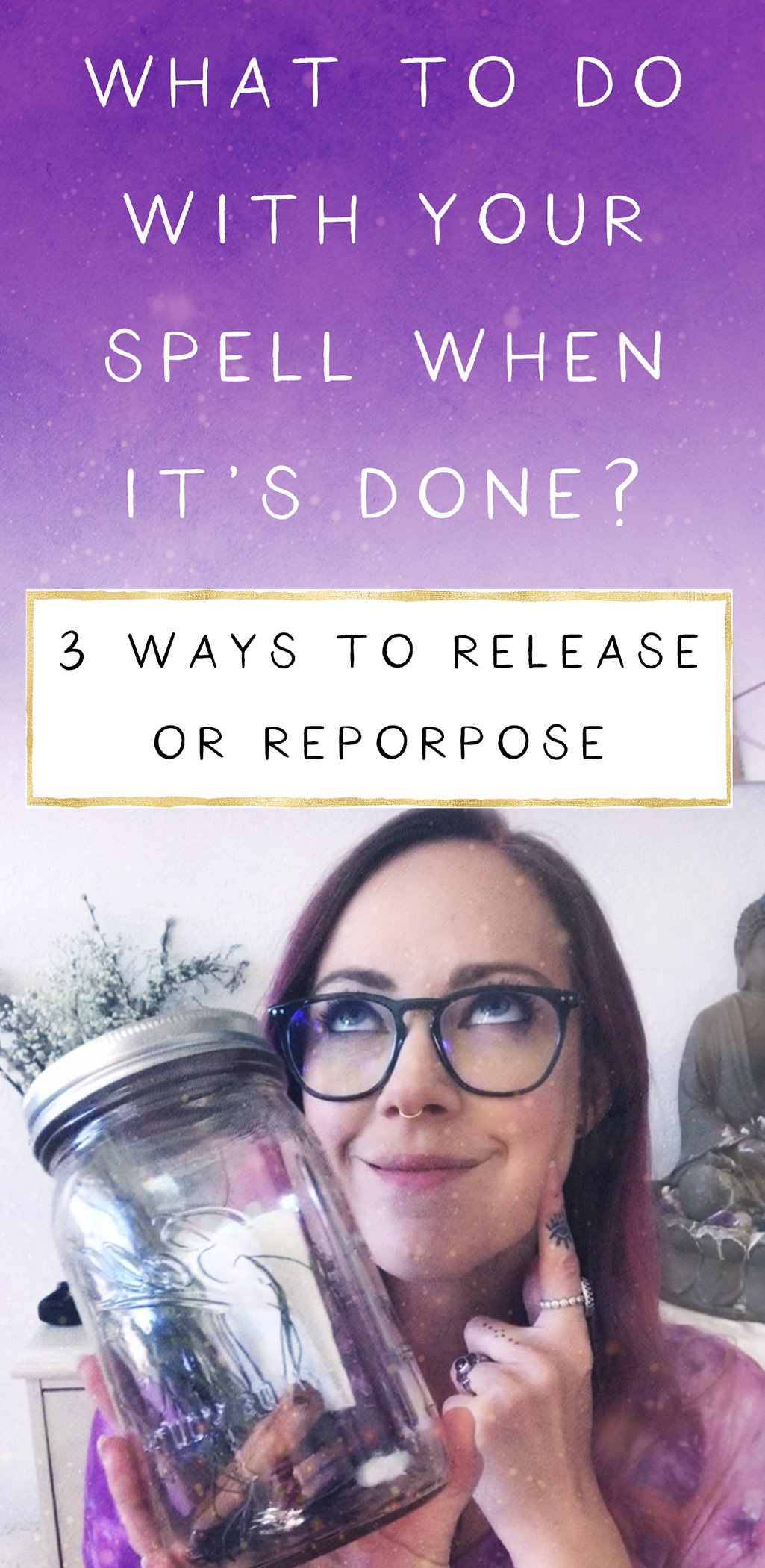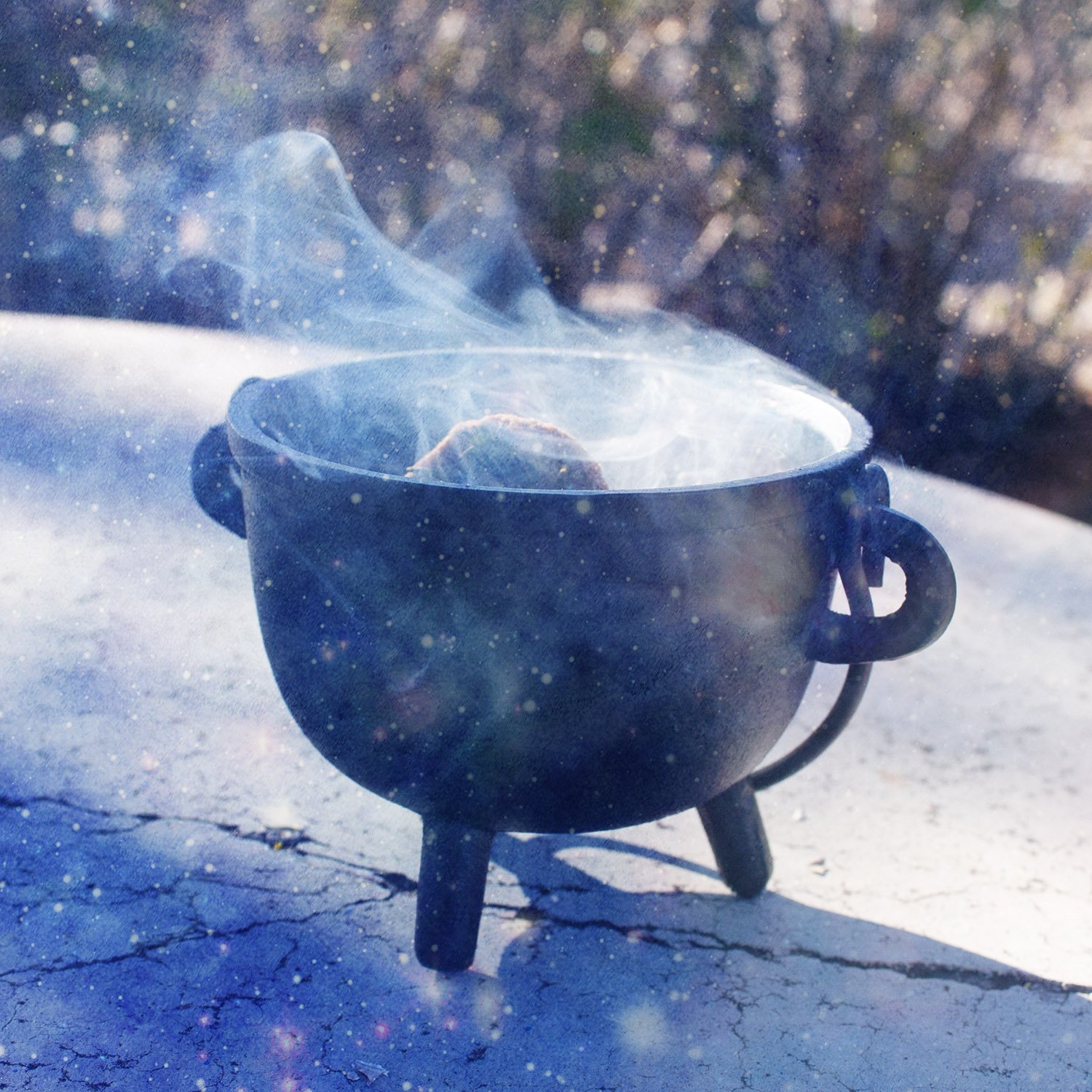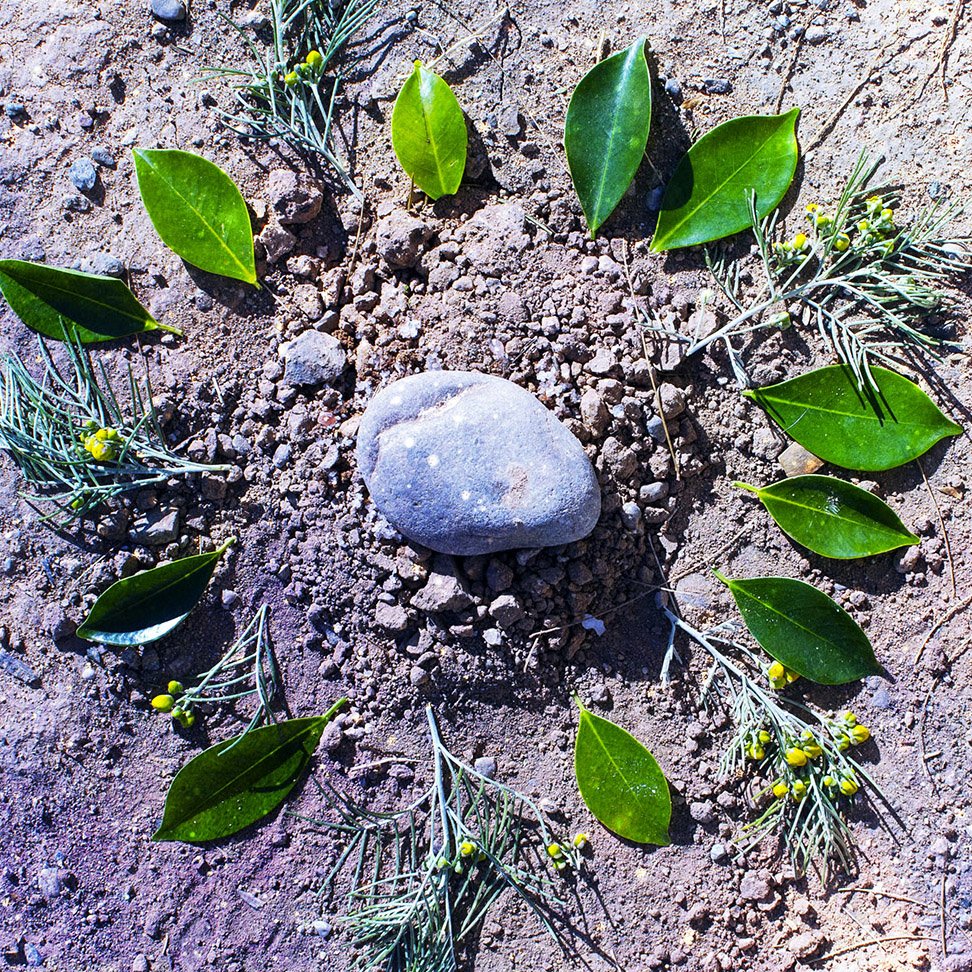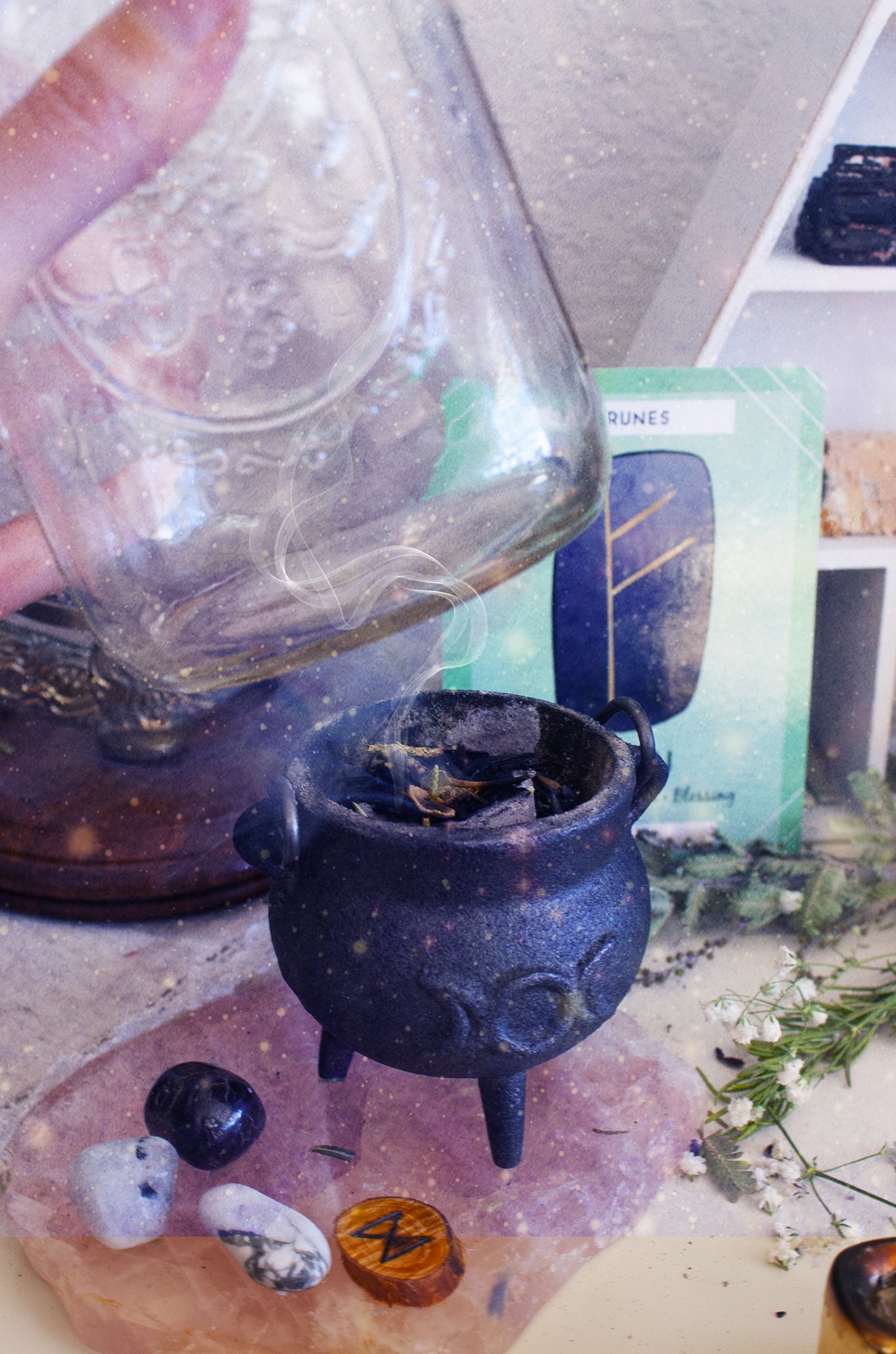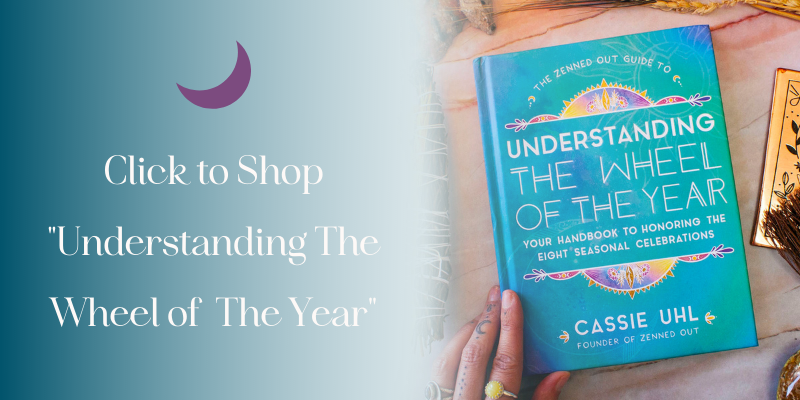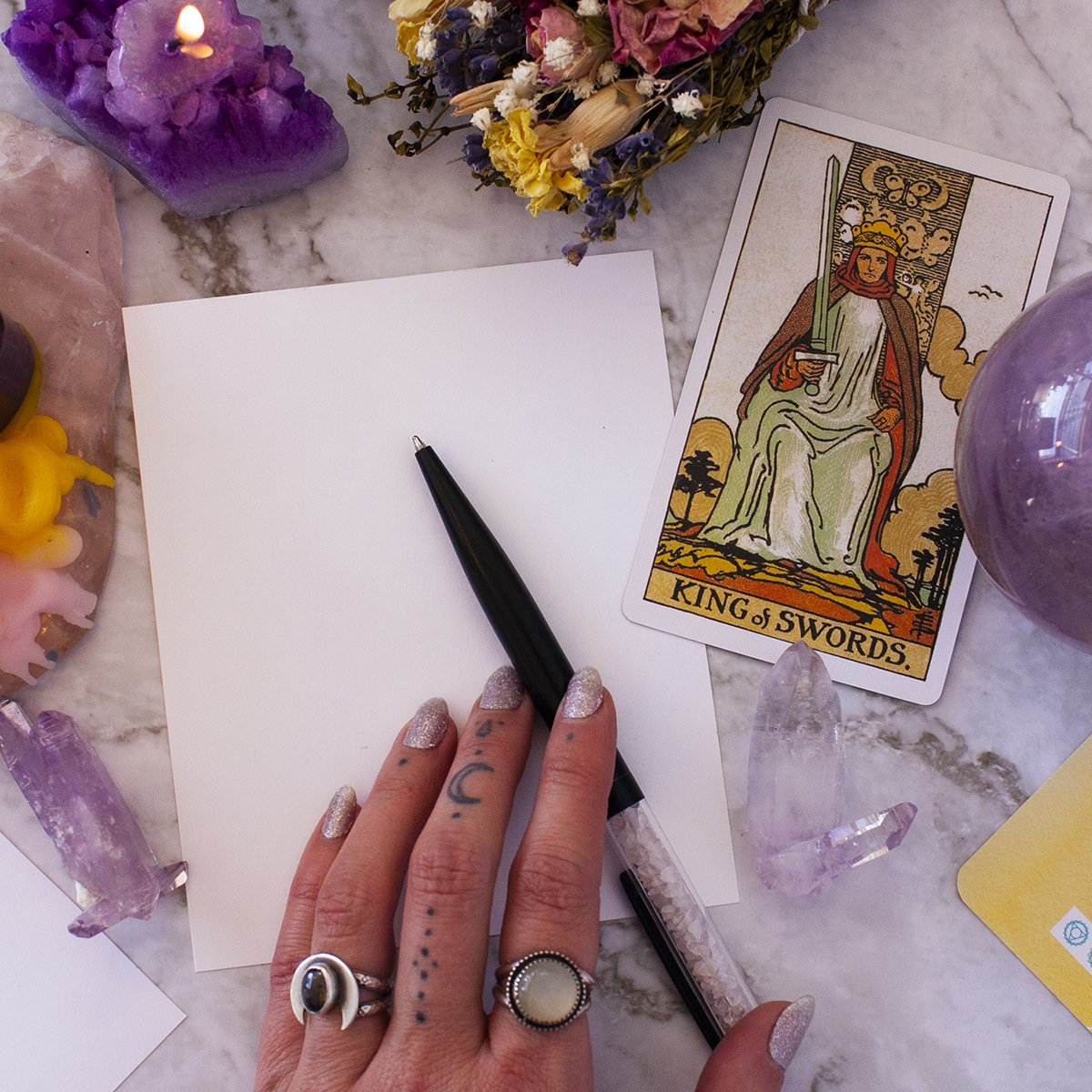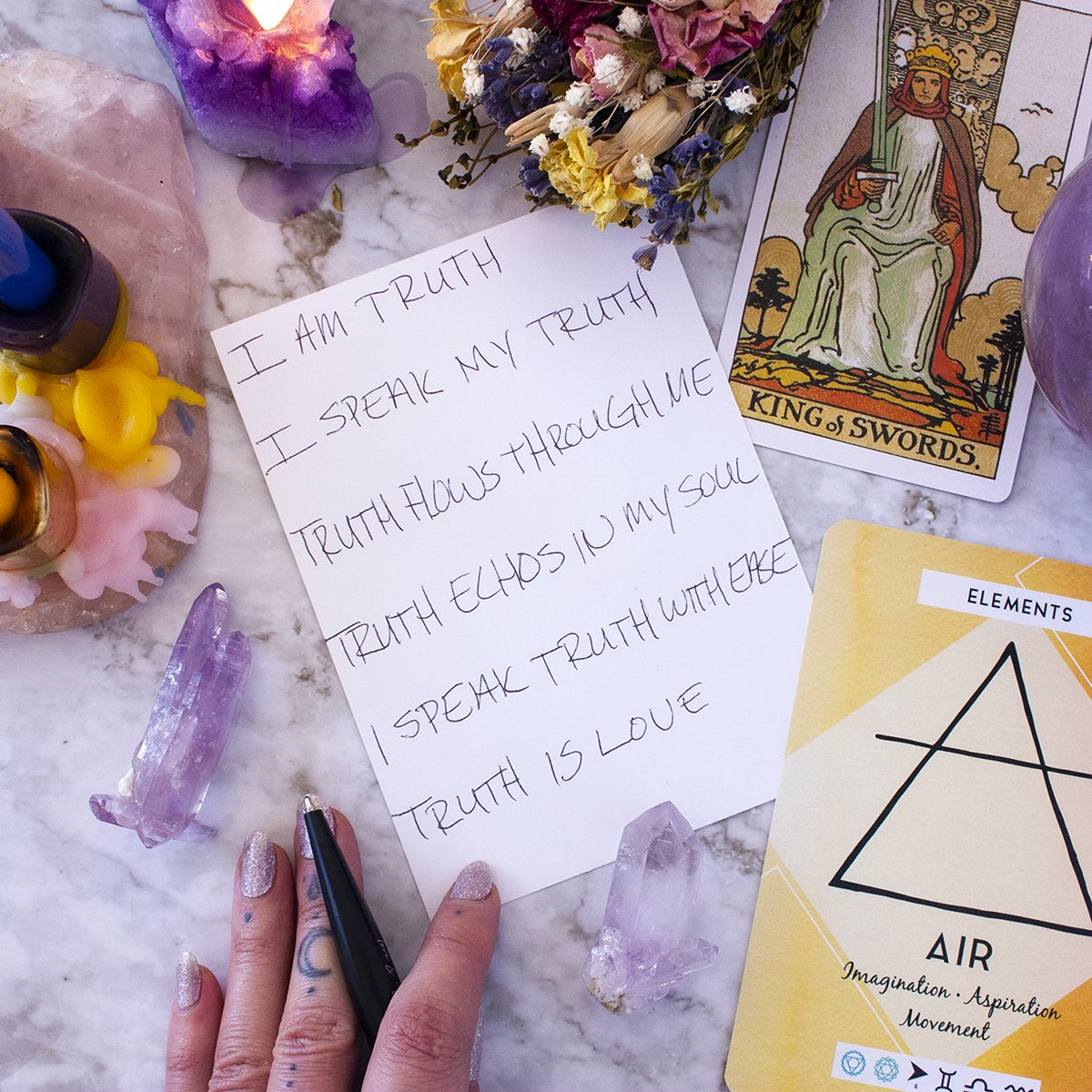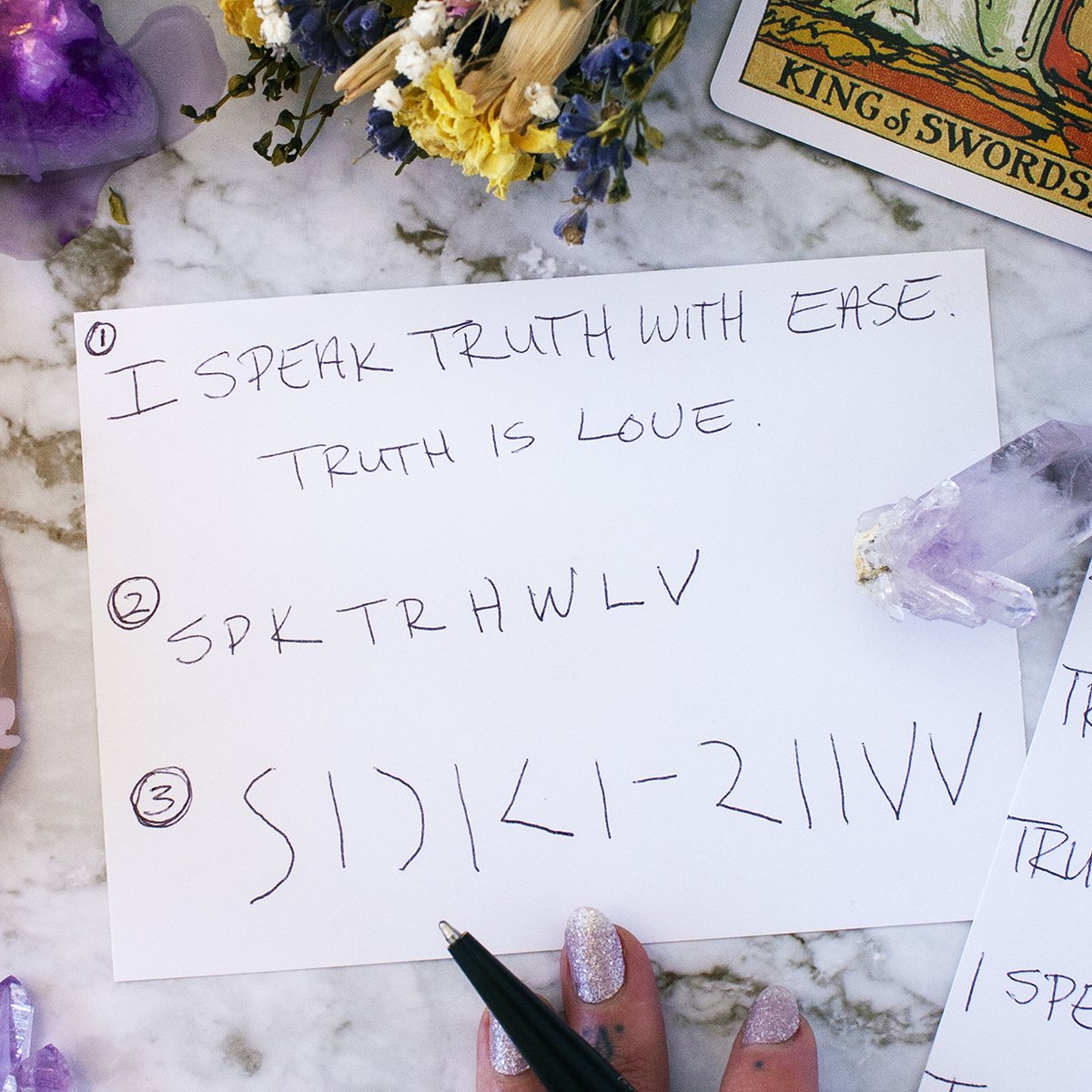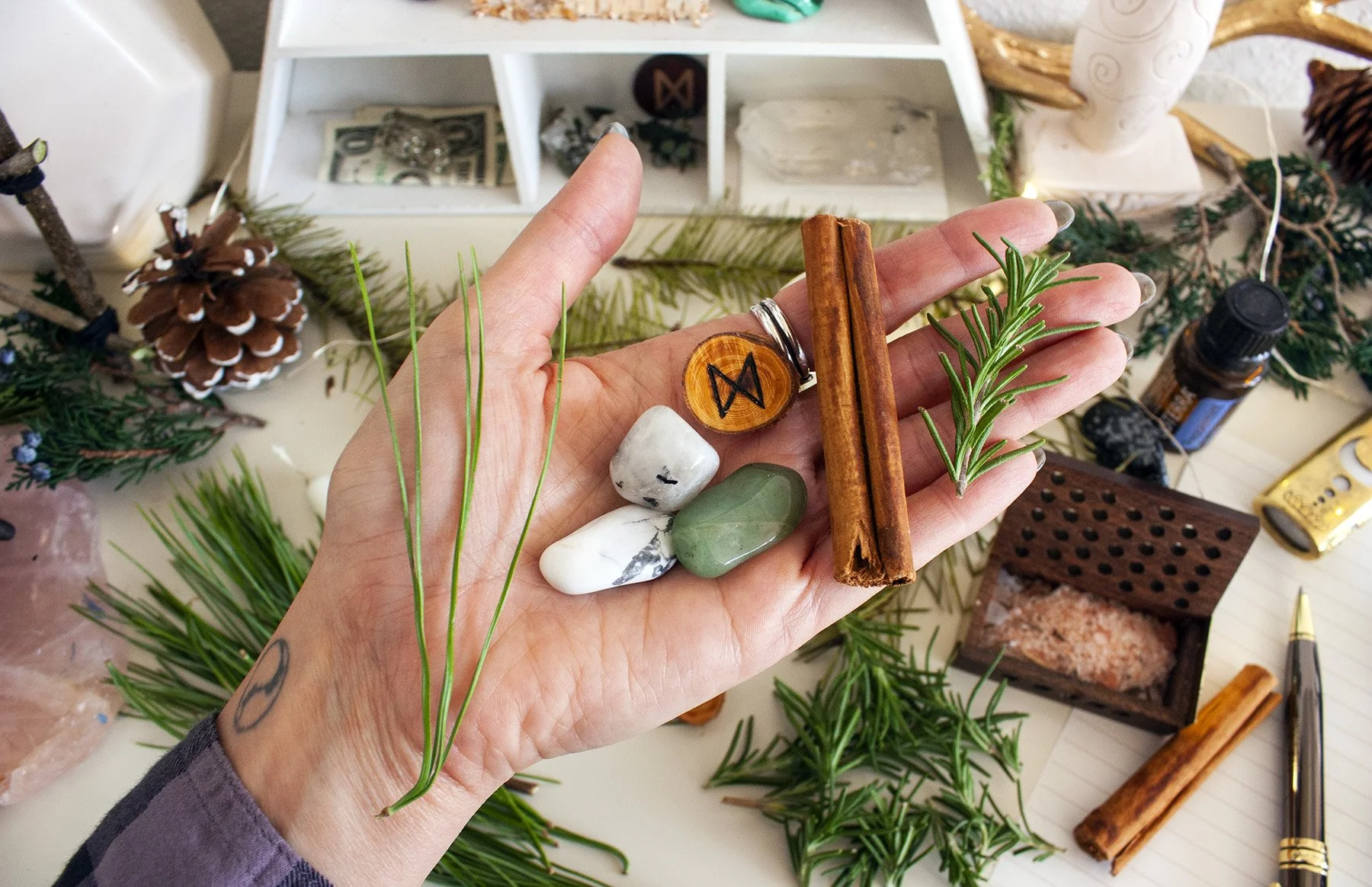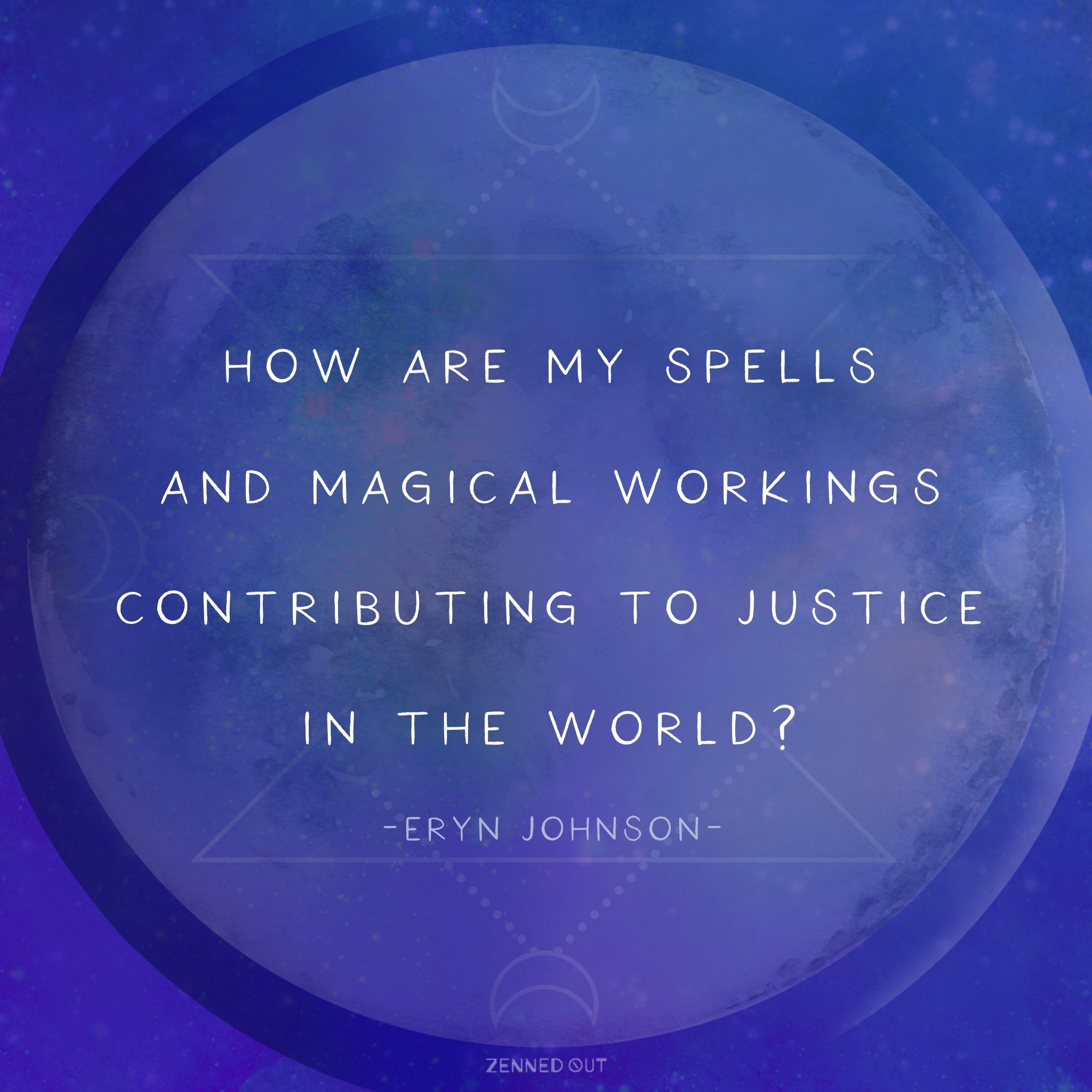Understanding the 4 Elements & Using them to Shift Your Energy
The four elements, earth, air, fire, and water, are physical materials and energies that comprise the world around us. If you don't already work with the four elements in your practice, you've likely heard of them because they're rather tricky to avoid as so many spiritual practices refer to them in some way.
The four elements, earth, air, fire, and water, are physical materials and energies that comprise the world around us. If you don't already work with the four elements in your practice, you've likely heard of them because they're rather tricky to avoid as so many spiritual practices refer to them in some way.
There are countless ways to deepen your relationship with the four elements and bring them into your practice. In this post, you'll learn a bit about the history of the four elements, common correspondences for them, how to work with them physically and energetically, calling them in for protection, and using them in your home or on your altar.
I want to quickly touch on the element of Spirit because I'm sure some of you may be wondering if I'll discuss it as well! I will touch on the fifth element, often referred to as Spirit, aether, or Akasha, especially in the history section. However, I will save a deeper dive into the fifth element of Spirit for a post of its own. Much of this share will be dedicated to the four elements as I see them as slightly separate from Spirit and very foundational.
Listen to this post on my podcast, Rooting into Wholeness here.
A brief view of history and the four elements
As usual, I do like to cover some history. I think it's an essential part of having a complete view of different spiritual practices. That said, I always research with an understanding that this history is rarely the whole picture, but rather one piece. This is especially true when you're reconstructing a spiritual path that's not clearly recorded, was attempted to be eradicated, or if you hold multiple cultural heritages (like many of us do!).
The deeper I dive into my spiritual roots, the clearer it becomes that building a meaningful practice combines historical facts, inference, oral traditions passed down, and personal experience. Each of these pieces, in my opinion, serves a useful purpose while building a spiritual practice. Here's a very brief history of some of the earliest mentions of the four elements.
One of the first written examples of the four elements comes from the Greek philosopher Empedocles in the fifth century BCE. Empedocles refers to them as the four roots and assigns each element or "root" to a Greek God or Goddess as follows, Hera with earth, Zeus with air, Aidoneus with fire, and Nestis with water (though there is some debate over this, this is the consensus.) The Gods and Goddesses Empedocles associated with each element is less important (to me) than the fact that he did associate them with Gods and Goddesses. Because Empedocles gave these elements spiritual significance by corresponding each with a God or Goddess, it indicates that he viewed them as having a deeper meaning than mere elements on a periodic table.
In Buddhist practices, we see the first written mention of the four (sometimes five) elements in the Pali Canon in 29 BCE. However, these were recorded based on oral history that had been previously passed down for possibly hundreds of years. We also have Vedic texts that speak to the five elements, or Pancha Bhootas, in Hinduism. These were first recorded in the Taittirīya Upanishad is unknown, but some think it could have been even earlier than Empedocles and predate Buddhist practices at around 500-600 BCE. If you've studied practices that have become more commonplace in the West, like Yoga or Ayurveda, these are the elements referred to in these practices.
In all of these cases, I'm simply talking about the written records. I believe, as do others, that the four elements have been worked with and used by many pagan and indigenous practices long before the written evidence was created.
As far as Celtic practices, the four elements were likely not a part of their practice. The number three was sacred to the Celts, so the elements they honored were the land, sea, and sky, or earth, water, and air. In witchcraft and other earth-based practices, the four elements became much more commonplace with the introduction of Wicca in the 1970s, which relies heavily on the four elements (sometimes five.)
Explore The Soul Discovery Journal for more on the elements
There's certainly reference to working with the four elements in pagan, shamanic, and indigenous practices worldwide. However, many of these practices have been passed down orally.
Elen Sentier teaches and practices British Shamanism, or the "old ways," as she calls it, shares about the four elements concerning the world tree. She explains this below, in this excerpt from her book, Following the Deer Trods.
"The World Tree holds the vertical axis on which the three worlds spin (Upperworld, Middleworld, and Lowerworld.) The vertical axis is like the warp-threads in weaving; these are threads on which the pattern is woven. Middleworld holds the horizontal axis of the four elements. These are the weft threads that weave the pattern of life.
The four elements - earth, air, fire, water - are the weft-threads.
These two, the warp and the weft, are the basis of the duality which enables life to be."
This explanation from Elen Sentier is hardly the only reference to the four elements in earth-based spiritual practices. I'm confident that wherever your cultural roots lie, you will be able to find reference to three, four, or five elements there as well. This is where inference and personal experience come in. When we examine the written history, we have one piece of the puzzle; however, when we explore the personal experiences from those who've lived and experienced lines of knowledge passed down, we receive a different part of the puzzle. For example, even though I walk a Celtic and British path primarily, I choose to work with the four elements because they have been an integral part of my practice, through my introduction to them with Yogic philosophy but in my witchcraft and shamanic work as well.
As always, work with what speaks to you, your experiences, and your heritage. Perhaps you prefer to work with three, four, or five elements. There are seeds of truth and wisdom in all of them.
For this post, I will be focusing on the four elements through my unique lens of witchcraft and British earth-based spiritual practices. However, my introduction to the four elements was through my Yoga teacher training in 2012, which will color my unique lens.
The elements and correspondences
Each element has a unique essence, which carries both positive and shadow attributes. No element is positive or negative, but rather a conglomerate of different energies. For example, we can see the soft and gentle flame of a candle or a roaring forest fire. Each has value and purpose. Each element also relates to a host of other energies and objects, called correspondences. Correspondences are energies that match and play well together.
Once you understand how the four elements relate to other energies, it creates a strong foundation for understanding magical correspondences on a broader level. Explore an in depth exploration of the four directions and elements by journeying to them here.
Keep in mind. These are my beliefs based on my research and experiences. If something I share about an element doesn't fit into your practice or even goes directly against your practice, no worries, just leave it. As we already discussed in the history section, spiritual practices using the four elements span the globe, so differing opinions are bound to come about.
Air card from The Ritual Deck.
Let's go through each element and discuss some of the most common meanings and correspondences for them.
Air relates to intellect, ideas, inspiration, and the mind. It corresponds with the East, the color yellow, the suit of swords in the tarot, the throat and heart space, wind, sound, smoke, smells, feathers, birds, and unseeable forces that influence our minds. In astrology, the three air signs are Gemini, Libra, and Aquarius.
Fire relates to transformation, action, power, and the ego. It corresponds with the South, the color red, the suit of wands in the tarot, the solar plexus area, flames, heat, candles, the phoenix, dance, and the destructive forces that ultimately encourage new growth. In astrology, the three fire signs are Aries, Leo, and Sagittarius.
Water relates to emotions, intuition, feelings, and the subconscious mind. It corresponds with the West, the color blue, the suit of cups in the tarot, the sacral area, springs, the ocean, tears, shells, aquatic animals, things in a liquid state like melting wax, and the forces that move us to feel so we can cleanse and heal. In astrology, the three water signs are Cancer, Scorpio, and Pisces.
Earth relates to safety, protection, the material world, and the physical body. It corresponds with the North, the color green, the root space, dirt, trees, rocks, food, bones, ancestral wisdom, and the physical energies that support and sustain us. In astrology, the three earth signs are Taurus, Virgo, and Capricorn.
I discuss this a lot in my Tarot Correspondences course and my new book, Understanding Tarot. As you can see, once you have a firm understanding of each of the elements, it will help you better understand Astrology, Tarot, and a host of other magickal practices.
This is a peek into each element. We'll go deeper into each of these, their positive and shadow sides, different tools to connect with them, and wisdom from each in the following posts:
Let's move on to some ways to begin working with the four elements collectively.
Connecting with the elements in the physical and energy body
As Elen Sentier stated in the excerpt from her book above, the four elements are the "weft threads that weave the pattern of life." The four elements affect each of us physically and energetically here in physical form. We can feel them in the body and connect with them in the subtle body.
If you want to form a deeper relationship with the four elements, this is where I'd invite you to begin, connecting with them within your body. There are many ways to start doing this, and it will be an ongoing practice because our relationship with the elements is not fixed and is constantly evolving and growing.
Earth card from The Ritual Deck.
Here are three ways I've learned to deepen my relationship with the four elements.
1. Notice the elements in the natural world and when you do, notice how they make you feel. For example, When I go on my regular walking meditations outside, this is one way that I tune in to the environment and the elements. I notice how the sun's heat feels on my skin. I notice the wind and any sounds it may be creating in the trees. I notice any water (which here in the desert is usually just the dew on the grass leftover from sprinklers). I notice the supportive earth beneath my feet. You can even imagine this in your mind right now. What feelings come up within you when you think about a stream vs. a fire? Each brings a different energy that is palpable within my mind's eye.
2. Notice how the four elements come up within your physical body. When you experience different sensations in your body, can you associate them with a specific element? For example, I'm someone who becomes ungrounded and anxious easily. I know what anxiety and dysregulation in my nervous system feel like. My mind races, I get a tingling sensation in my neck, my hands and feet sometimes get tingly, and my breath becomes shorter and moves to the chest. These sensations can come up due to an event outside of me or me merely not making time to care for my body, mind, and Spirit.
For me, I recognize this as an overabundance of air. Air corresponds with the thinking mind, intellect, and ideas. When I'm stuck in my head, and it's literally pulling me out of my body, I know I need to ground and bring in more earth. If I find myself in this place, I make sure to do things that bring in more of the earth element, like getting outside and feeling the support of the earth below my feet, or perhaps I meditate and visualize a connection to the earth. This is why my regular walking meditation practice is so imperative for me. Of course, this is not a cure-all nor an excuse to not seek out professional help. I've also relied on therapy and medication for my anxiety at different times in my life, but I find that a daily practice such as this helps support me in different ways.
Can you bring to mind some common emotions or sensations in your body? Perhaps you lean towards too much earth and often feel sluggish, tired, or heavy? Or, too much water, and you find yourself overly emotional and often in a puddle of tears. Or too much fire, which could feel like a need to be forceful or constantly doing. As I mentioned, each element is neither good nor bad. They each have both positive and shadow sides to work with and recognize. It's in finding a balance between them that we can move towards more equilibrium.
Water card from The Ritual Deck.
3. There are also ways to work with the elements on an energetic level. This is great if you don't have access to elements you want to work with or do some healing work during meditation or journeying.
I rely heavily on the four elements while working alongside clients for energy work. I see each element as an ally or helping Spirit to aid in giving each client what they need for healing. Of course, there are so many ways to do this for yourself as well. Here are some ways that I've learned over the years to work with each element energetically.
For earth, one of my favorite grounding techniques is to imagine that beam of energy or even a root coming from the base of your spine and connecting with the energy of earth (you can do this outside for extra potent earth energy!) In energy work, I will often pull in earth and mud (energetically within my altered state of performing energy work) to place on top of people if their energy feels dysregulated or "buzzy."
For air, I visualize air blowing around me and through my body. When performing energy work, I will sometimes blow air into certain parts of the body to clear or bring in more air. I also work with feathers similarly.
For water, I love to visit and visualize sacred springs and work with the water for healing for myself or with my clients. Spring waters are one of the most common tools, next to earth, that I pour into parts of people's bodies to bring cleansing and healing.
For fire, I love dance, either physically or even visualizing it. I'll imagine certain issues or things being burned up within me. I'm cautious with fire for energy work as it's so intense, so it's something I don't often use unless someone is very low energy.
I encourage you to explore your relationship with each element through meditation or journey work to find ways to work with them that work for you.
I hope this gives you some guidance to begin working with the elements both physically and energetically. As I mentioned, I will dedicate a post to each of these elements to explore each one on a deeper level.
Spellwork and Protection with the Elements
The four elements are often used in both spellwork and protection. Let's discuss some ways to work with them in these ways. As we discussed, each element carries specific energy, and you can call upon those energies through the elements to better facilitate particular outcomes in spellwork.
Fire card from The Ritual Deck.
Here are examples for each element. If you are conducting a spell to bring in mental clarity, the element of air would be appropriate, and you may want to incorporate feathers or plants that blow in the wind to honor air. Fire is your friend, and candle spellwork would be ideal if you are conducting a spell to energize you or facilitate a transformation. If you are performing spellwork to connect with your intuitive mind, bring some water into your spell by implementing water, shells, or aquatic materials. If you're working on manifesting something physical into your life, call upon the element of earth by working with stones, crystals, or earth objects to help bring about material possession.
There are so many different items that correspond with each element, so you truly have a bounty of various tools when it comes to representing the elements in your spellwork. You could rely on different tarot cards, plants, crystals, Gods, Goddesses, etc., to bring in an element. If you're learning the correspondences for the elements, I designed my oracle card deck, The Ritual Deck, to be a learning tool specifically for this! Each card has a correspondence bar at the bottom that shows the corresponding element for each card/symbol. Beyond this deck, I also love "Llewellyn's Complete Correspondence Guide." It's a big book but one I think any witch or person who dabbles in spellwork should have!
When it comes to protection, I love working with the four elements! If you've ever had a session with me, you know that I begin each session with some drumming and invoke each of the four elements to create a sacred container for our work. I also do this mentally whenever I journey. In Wicca, this is often referred to as "Calling the Quarters." But, you certainly do not need to consider yourself a Wiccan to work with the elements in this way. Working with the elements in this way for protection is something we see in many earth-based and shamanic practices.
To work with the elements in this way for protection, you can call in each element aloud or in your mind. It's common to start at the East with air, and move clockwise around the directions, Fire of the South, Water of the West, and Earth of the North. I like to visualize each element swooping in to create a barrier around me as I work. You could also place a physical representation of each element around you in this same order.
In witchcraft, this is often referred to as casting a circle. However, there are many other ways to cast a circle, and you do not have to consider yourself a witch to use the elements in this way. The next time you feel like you need extra protection for spellwork, meditating, journeying, etc. I encourage you to try either of these techniques and notice how you feel.
Using the four elements on altars and living spaces
One of the most common ways people work the elements into their practice is through an altar. This is another tool that we can see across cultures and traditions. It's a widespread practice to represent all four elements present on an altar for balance, protection and to show gratitude for each of the elements. We've touched on this a bit, but I'll share here some suggestions for ways to represent each element on your altar.
Air: Feathers, images or sculptures of birds or flying insects, smoke, fans, herbs or plants that blow in the wind, any cards from the suit of swords in the tarot, the color yellow, labradorite, amethyst, musical instruments like singing bowls, chimes, rattles, drums, etc.
Fire: Candles, burning charcoal, burning herbs, incense, lava rocks, obsidian, yellow jasper, any cards from the suit of wands in the tarot, a wand, phallic symbols, symbols, or images of the God (could be any God you're comfortable with.)
Water: water, shells, images or sculptures of any aquatic animals, opal, moonstone, aquamarine, any cards from the suit of cups in the tarot, chalices, cauldrons, symbols of the Goddess (could be any Goddess you're comfortable with.)
Earth: stones, wood, plant material, living plants, herbs, symbols or sculptures of trees, petrified wood, the Greenman, Gaia (or any earth God or Goddess in your practice), any card from the suit of pentacles in the tarot, money, different metals.
Some unique items can serve as all four (or five) of the elements.
Smoke cleansing with a shell or chalice-shaped bowl can serve as a representation of all four elements. The shell or chalice shape represents water, the plant material represents earth, the burning herbs represent fire, and the smoke represents air.
Candles are another one. The flame represents fire, the smoke represents air, the wick represents earth, and the melting wax represents water. I'm sure there are others that I'm not aware of or familiar with!
You can modify these same suggestions for your altar to help balance the energy of your living space. For example, if you're going through a transition as a family unit, you may find it helpful to bring in some grounding elements to your home to offer you and your family a greater sense of safety and support. Alternatively, suppose you recently had a visitor in your home who left some unwelcome residual energy. In that case, you might benefit from bringing more of the air element through smoke cleansing, or simply opening the windows, to bring in an energetic fresh breeze, if you will.
As you can see, there are so many meaningful and important ways to work with the four elements in your spiritual practice!
I'd like to note one last thing, especially when discussing using items from the natural world, both physically and energetically, is to be reciprocal with these elemental energies. When you call on them, thank them for their assistance by taking a few quiet breaths and offering your thanks and gratitude. If you take items from nature, consider leaving an offering as a token of your appreciation. This can be simple, but it's important and can genuinely help you form a much deeper relationship with the elements and nature.
If you enjoyed this share, I invite you to share it with someone else who may enjoy it as well. I'm excited to do deep dives into each of the elements soon!
In love and gratitude, Cassie
The Second Harvest // Honoring the Autumn Equinox with Apples
We started our triplicity of harvests with Lughnasadh, and the harvest season continues with the Autumn Equinox. The Autumn Equinox is our sacred portal into the darker half of the year. The amount of sunlight and night we experience will be in equilibrium for a moment before darkness begins to rule each day and call us more deeply inward.In this share, we'll discuss the layered energies of the Autumn Equinox, a few ways to tune into and honor its energy, and some sacred correspondences, specifically apples.
We started our triplicity of harvests with Lughnasadh, and the harvest season continues with the Autumn Equinox. The Autumn Equinox is our sacred portal into the darker half of the year. The amount of sunlight and night we experience will be in equilibrium for a moment before darkness begins to rule each day and call us more deeply inward.
In this share, we'll discuss the layered energies of the Autumn Equinox, a few ways to tune into and honor its energy, and some sacred correspondences, specifically apples. I'd also like to discuss the name Mabon often associated with this season. Listen to this post on my podcast, Rooting into Wholeness, below.
Mabon is a common name associated with this season, and though there's nothing wrong with referring to this season as Mabon, which is one of the more manufactured names on the Wheel of the Year. Names that don't quite make sense on the Wheel of the Year aren't something new and are something I discuss in my new book, Understanding The Wheel of The Year, shop it here.
The Wheel of the Year itself, as a unified construct of seasonal celebrations, is a relatively modern compilation of celebrations from various people, not one specific culture. The name Mabon was assigned by Aiden Kelly, one of the collaborators of the modern construct of the Wheel of the Year. Mabon was a Welsh mythological figure who doesn't appear to have any real connection to the Autumn Equinox. Some believe Aiden simply wanted another short name to associate with this season and, Mabon was the best he could come up with. We may never know! That said, Mabon is a common name associated with this season by many Wiccans. If it resonates with you, use it. If it doesn't, referring to this season as the Autumn Equinox is fine too. As with all of our seasonal celebrations, this is a time to honor and connect with the earth, not quibble over names.
A Balance of Light and Dark
There are so many beautiful energies layered into this season. This phase brings us more deeply into the waning side of the year by corresponding with the last quarter moon (a moon of equal light and dark, another visual of the balance this season brings about.) We also shift from Virgo to Libra season at this time. The sign of Libra, of course, being the scales mirroring this theme of balance again.
Beyond the energetics, the equinoxes spur extreme physical changes as well. The sunlight no longer reigns supreme throughout our day. The plant and animal world take note, and things start to shift and change all around and within us. These physical changes can bring a heightened sense of balance and change for everyone.
The full moon closest to the Equinox, which we experienced earlier this week, is the harvest moon. It wasn't uncommon for our ancestors to work all through the night in the fields harvesting crops in preparation for the winter ahead during the harvest moon. It's also fitting that our full harvest moon happened in the sign of Pisces (the end of the zodiac year) as we fully step into the darker half of the year.
As with any harvest, themes of abundance and gratitude surface. What always comes up for me around these themes is the idea of equal reciprocity. Equal reciprocity is always important, but with this season being one of balance, it can be a healing theme to explore. So, as you assess the abundance in your life, can you make space also to explore equal reciprocity? If you have an abundance of food, can you find a way to give back to the earth or those who need more food? If you have an abundance of time, how could you use it to serve yourself and others best? Alternatively, if you find yourself lacking in a specific area, could you ask for more of what you need? These questions can be applied to all facets of your life. I'll touch on this more when we talk correspondences because I have a perfect tarot card for this season.
A final theme that runs through this season is wholeness. Anytime we strive towards balance, we're moving into more wholeness. It's a time to take stock, shed what's no longer serving, and call in what you'd like to see more of in your life. We see this theme reflected perfectly in the apple, which brings me to our first ritual for this season.
Apple Rituals for the Autumn Equinox
I will be focusing solely on apples for this ritual section! Why apples? Apples tend to ripen around this season and are a potent symbol of abundance, gratitude, and wholeness. Apples are associated with the underworld connecting them with moving into the darker part of the year. There's no shortage of myths and folklore from the Celts, Druids, and other Euro-pagans about apples, apple trees, and their spiritual significance. The island of Avalon translates to the "Island of Apples." Apples are viewed as sacred and magical fruits by many.
When cut horizontally, the apple reveals five seeds in the shape of a star. The five seeds represent the five elements and the four directions. The circle encompassing them (the outer skin of the apple) represents the wholeness these energies create when combined in equal balance. The apple is a sacred symbol of wholeness and the path to wholeness.
Those are just a few reasons why apples are perfect for this season! There are many ways to work apples into your ritual practice this season, which is why I'm solely focusing on apples for these rituals. However, if you're looking for some other ways to tune into this season, click here or here for some past posts all about the Autumn Equinox.
This ritual is adapted from my book, Understanding The Wheel of the Year (order it here!).
Apple Ritual for Wholeness
You'll need:
One apple
One brown candle and fireproof dish or candle base
A piece of paper and pen or pencil
Steps:
Gather your materials and ensure that you won't be disturbed for 20-30 minutes.
Take 2-3 minutes to center and ground yourself. You can do this by tuning into your body or focusing on your breathing for a couple of minutes.
Once you feel ready, bring an area of your life to mind that feels out of balance. Write this situation down on a piece of paper.
Cut your apple across the middle, and then cut a slice from that. Your slice should have a five-pointed star on it representing the five elements.
Place your paper on the bottom in a fireproof tray, bowl, or plate. Place your apple slice on the top.
Hold your brown candle in your hand and ask for guidance around finding more balance and wholeness around the situation you wrote out.
Place your candle on top of the apple. You'll be using the apple here as a vessel to inspire wholeness in this spell.
Light your candle and say aloud to yourself, "I am whole and perfectly balanced. So it is." or something similar. Stay with the candle as it burns.
Note: Always use proper fire safety and care when working with candles. Never leave your candle unattended.
As your candle burns, gaze at the flame and tune into your breath and body.
Call in each of the five elements one at a time (Earth, air, fire, water, and spirit) to restore you to wholeness and bring balance.
Stay with your candle as it burns and feels the support of the five elements around you.
Be open to any ideas that come to you to find more balance and wholeness in your life.
Write down any ideas that came to mind to find balance and wholeness in your life.
Finally, in the vein of equal reciprocity, I suggest giving an offering to the earth for any wisdom, insights, or balancing you found throughout this ritual.
Watch the ritual in this Instagram reel I created below.
Here are some other simple ways to weave apples into your ritual practice.
Eat apples or drink.
Bake with apples (one of my favorites!) As you do, be mindful and aware of their sacred connection to wholeness and consider cutting your apples horizontal to reveal their inner star for your final product! I love a good old-fashioned apple pie or tart for this season.
Adorn your altar or home with apples.
Go apple picking if it's in season for you.
Learn more about myths and folklore about apples connected with your heritage. Many cultures have legends and mythology about apples.
Meditate while holding an apple, and ask the apple to share its wisdom with you.
Plant an apple tree
Save apple seeds to use in other spellwork. They correspond with magic, psychic abilities, protection, rebirth, and death. They're an excellent option for protection rituals.
If you have apple trees where you live, work with the wood of the apple tree for ritual or spellwork.
Fall Equinox and Mabon Correspondences
Correspondences are energies that play well together or match. Working with correspondences is a great way to better amplify your rituals, spells or connect with a specific energy. Placing some correspondences for this season can help bring the energy of the Fall Equinox into your space. Here are some of my favorite correspondences for this season, all from my new book, Understanding the Wheel of The Year.
Moon Phase: Last Quarter Moon
Energy center: Sacral, heart
Element: Water
Crystals: Carnelian, snowflake obsidian, rhodonite, malachite, moonstone, yellow topaz
Colors: maroon, orange, brown, tan
Tools and special objects: fall leaves, corn dolly, guards
Plants and Scents: yarrow, sage, cinnamon, patchouli, frankincense, anise
Foods: Apples, grains, guards, pumpkins, nuts, seeds, berries
Runes: Gebo, Fehu, Mannaz, Sowilo
Goddesses: Cailleach, Persephone, Inanna, the Morrigan, Modron
Gods: Avalloc, Dionysus, Mabon
I also wanted to touch on some tarot cards for this season. When we discuss equal reciprocity, the card that comes up for me and makes me think of the Equinox and Libra season is the 6 of cups. 6's correspond with Venus, harmony, and balance. And the cups mirror the water element that corresponds with this season. The card itself speaks to a give and take between one's self or between you and others. It's a great card to meditate with or journal about for this season.
As you can see, this is a rich and powerful season. Remember, each sabbat is a season, not a day. You can tune into its energy and honor it anytime until Samhain.
If you enjoyed this share, please consider sharing it with someone who may enjoy it too—wishing you a beautiful second harvest season.
Love & Shadow xoxo, Cassie
6 Ways to Work With Your Tarot Cards Besides Divination
Divination is a fantastic way to work with the tarot, but you’re selling yourself short with your trusted tarot deck if you’re only using it to glean insights into the future. At its core, and in my opinion, the tarot is a powerful self-reflective tool. It’s here to share insights and guidance about what’s going on with you right now, at this moment. Telling the future is one of the most common draws to tarot, but the tarot truly brings a host of other benefits.Read on for six ways to work with the tarot to grow and expand in new ways, aside from divination.
Divination is a fantastic way to work with the tarot, but you’re selling yourself short with your trusted tarot deck if you’re only using it to glean insights into the future. At its core, and in my opinion, the tarot is a powerful self-reflective tool. It’s here to share insights and guidance about what’s going on with you right now, at this moment. Telling the future is one of the most common draws to tarot, but the tarot truly brings a host of other benefits.
Read on for six ways to work with the tarot to grow and expand in new ways, aside from divination.
Working with Common Archetypes
The tarot is full of common archetypes that you will encounter or embody at different times in your life. Archetypes are timeless and universal energies that people can understand across cultures. For example, the archetype of the mother is something we can all understand on some level. Even if you do not have a relationship with your biological mother or have children of your own, the overarching energy of the archetype of the mother is something you can understand. Furthermore, you do not have to be a mother or a woman to embody the mother's archetype. Anyone can access and learn from the energy of motherhood.
The tarot is dripping with common archetypes, especially in the major arcana. The way the archetypes show up can be personal and vary from person to person. Most of the common archetypes appear in the major arcana, but they can also be found in the minor. Here are some of the archetypes I associate with the cards: the ego (the sun), soul (the moon), mother (empress), father (emperor), wizard (magician), child (the fool), lover (the lovers), martyr (hanged one), seer (hermit), and authoritarian (hierophant), etc. You may decide on different archetypal associations with different cards, and that’s fine.
So, how can you work with the archetypes of the tarot? Lots of ways! You can explore how the archetypal energies associated with the cards make you feel, you can look at the symbology on each card and explore how it makes you feel about its archetype, you can journal about the cards and their archetypal connections, and you can layer it into how you interact with and understand the cards.
Journaling
Journaling allows you to dive deep into the meaning and energy of each card. You’ll better understand the lessons each card wants to offer you through journaling about them. Truth be told, I’m not a big fan of journaling. Journaling with the tarot is different, though. I always write when I pull cards for myself. To begin journaling with the cards, you can work through them one at a time in order or intuitively select a card to journal about. Here are some suggestions for questions to ask yourself when you’re journaling about different cards:
How does this card make me feel?
What symbols or imagery jumps out to me?
Are there any archetypes or human themes that stand out to me in this card?
How does this card show up in my life right now?
What can I learn from this card?
Energy Readings
If you’ve followed my work long, you already know that I love all things energy! We are energy beings, and the tarot is another magical and beautiful way to work with your energy. What do I mean by this? Tarot is an excellent tool for reading your energy and understanding how to balance your energy.
Each card in the tarot corresponds with different energy. When you work with the cards specifically to assess your energy, the cards can act as a guide for what kind of energy you may need more or less of. Each card's energy can act as a signal that you either have too much or too little of that energy.
For example, if you pull some cards to determine what your energy needs to be more balanced and you pull loads of pentacles, that would be a sign that you need more grounding in your life to feel more balanced because the pentacles relate to the element of earth.
You could also consider pulling a card for each energy center or chakra in your body to get an idea of what each energy center needs to be in better balance. I dive into this more in-depth in my book, The Zenned Out Guide to Understanding Tarot.
Exploring and Understanding Common Correspondences
If you’re a visual learner, like I am, you’ll love working with the tarot to understand common correspondences better. I won’t spend too much time talking about this here because I already covered this in a previous post here.
Basically, each of the cards has a handful of correspondences (correspondences are simply energies that match or “play well together.”) The most common correspondences are the elements, astrological energies, and numerology. I’ve found that using the tarot as a tool to understand different types of energies better is immensely helpful, especially for visual learners. The cards' symbology and meanings will add a depth of understanding to your astrology, numerology, or elemental practice. You’ll also learn the tarot card meanings faster as well.
Shadow work
The cards of the tarot contain a complete range of human experiences. It does not gloss over the hard, scary, and sometimes earth-shattering parts of life. This is one reason why, I believe, so many are nervous about diving into tarot. It’s also why it can be such a powerful healing tool.
Your cards will not shield you from your shadow. Instead, they call you to cozy up to your shadow to understand better what it has to teach you. If the idea of shadow work is new to you, check out this previous post to learn more about what shadow work is. Here are a few ways to dive into shadow work using your tarot card deck.
Journal about the cards that make you the most uncomfortable. Use the questions above from the journaling section.
Ask questions specifically to explore your shadow, like “What parts of my shadow need healing and exploring?”, “ What do I have to learn from my shadow?” or “What parts of my shadow have I been avoiding?”
Spellwork & Magick
If you’re a fan of spellwork, altars, or magick, this one’s for you (it’s also another one of my favorite ways to work with my deck.) Because each tarot card carries a unique energy, they are perfect for adding energy and intention to spellwork, magick, and your altar. Here are a couple of ways to start working your cards into your magickal practice.
Place a card on your altar to invite in a specific kind of energy. For example, if you’re focusing on improving your intuition, you could place the moon, the high priestess, or the queen of cups on your altar as a reminder and energetic intention.
Add a card to your spell. For example, if you’re focusing on bringing more abundance into your life, you could include the nine of pentacles or the empress into your spell.
Want to learn more about working with the tarot? Order my book, The Zenned Out Guide to Understanding Tarot. Or, check out some of these posts: Understanding Tarot Correspondences, The Difference Between Tarot and Oracle, 7 Tarot Myths Debunked or Understanding Tarot Birth Cards.
Your spell's over, now what? 3 Ways to release or repurpose your ritual items
You waited for the perfect moon phase, gathered your supplies, and sent your magic out into the world. Now, you’re left with the remnants of your magical workings. What can be done with your leftover jars and bowls of notes, rocks, herbs, and candle wax?Whether your magical workings have come to fruition or not, you have quite a few options when it comes to releasing or reusing your past spells. In this blog post, I’m going to share three different ways to honor and release your sacred spells and objects.
You waited for the perfect moon phase, gathered your supplies, and sent your magic out into the world. Now, you’re left with the remnants of your magical workings. What can be done with your leftover jars and bowls of notes, rocks, herbs, and candle wax?
Whether your magical workings have come to fruition or not, you have quite a few options when it comes to releasing or reusing your past spells. In this blog post, I’m going to share three different ways to honor and release your sacred spells and objects.
It is the very act of your spell and ritual work that releases your desires out into the universe. The remnants left behind can serve as helpful reminders, but repurposing or releasing your spell will not break or reverse anything. There are certainly some practices that may require you to keep the components of your spell intact, however, if that’s the case, you’ll undoubtedly know. Trust your inner guidance system.
As you read through these options, know that you can use one or all of these methods to repurpose or release your spell objects. Some objects may not work for certain methods outlined below, in that case, it’s okay to combine. You can also check out this quick video I created for our Instagram page.
1. Burning Ceremony
Fire is a transformative tool, so this method goes beyond simply making space for new spells. If your spell has ended it may be time to let it transform in new ways. This method can also be helpful to aid you in detaching from the outcome of your spellwork. Fire is powerful!
A burning ceremony is a great option for spells that include paper, herbs, candle wax, and other burnable objects. Most candle wax is paraffin, which means it’s not ideal for burying in the ground, and reusing it can be time-consuming. If your spell has leftover wax, burning it is one of the easiest and safest ways to release it.
For this method, you’ll need a large cauldron, fireproof dish, or outdoor fire. Depending on what the contents of your spell were, you’ll likely want to do this outside to prevent a huge plume of smoke from inhabiting your house. As you release your items into the fire, trust that the energy will continue to transform and benefit yourself and others.
2. Release to the Earth
A gentler option is to release your items back into the Earth. For this method, it’s imperative that you only release items that are natural and biodegradable. For example, most candles are made from paraffin wax and are not suitable for this method. I also do not recommend burying glass jars or bottles. Herbs, plants, biodegradable papers, and crystals are ideal for this method. If your spell was contained in a jar or vessel of some kind, I recommend reusing it, see the next section for tips on this.
Items that should not be given back to the Earth:
Salt: salt can harm or even kill plants
Candle wax: most candles are made with paraffin wax which is not biodegradable
Anything that is not 100% biodegradable
You can bury your items in a meaningful location or in your backyard, the location itself doesn’t need to be special. If you live near a natural body of water, releasing them into the water is a great option as well. This method can be transformative like the fire but in a gentler way. I find this method is great for inspiring a sense of gratitude and giving thanks to Mother Earth.
3. Cleanse and reuse
For all the objects you want to reuse like meaningful crystals and items that don’t burn or biodegrade, you’ll want to energetically cleanse them. Because spell and ritual work evokes such strong emotions, it’s important to energetically cleanse items before reusing them for another purpose. Unless, of course, the energy you imbued your items with is something you want to keep around. However, if you performed a spell for letting go of a past relationship, and then want to use the same jar or tools for helping you gain a new career, it’ll be best to cleanse your items.
There are a variety of ways to cleanse physical objects. Here are a few simple techniques.
Place your items in salt overnight.
Hold your items in cleansing smoke like rosemary, cedar, lavender, or some other herb in line with your spiritual heritage.
For rocks or other items that are waterproof, hold them in running water.
Hold your items in your hands and call on any guides, spirits, or energies you work with to cleanse your items.
No need to let your sacred space fill up with spellwork from the past! I hope you enjoyed these tips to keep your spell and ritual practice open and flowing.
Inspired Growth Candle Ritual for Imbolc
The Celtic Sabbat of Imbolc honors the midway point between the Winter Solstice and Spring. The Earth is starting to wake up, and even though it may be quite cold still, you can start to see glimmers of nature waking up. On a personal level, this is a season to allow inspiration to stir within you. Imbolc is a call to allow your inner transformations so you can grow into the highest and best version of yourself.
The Celtic Sabbat of Imbolc honors the midway point between the Winter Solstice and Spring. The Earth is starting to wake up, and even though it may be quite cold still, you can start to see glimmers of nature waking up. On a personal level, this is a season to allow inspiration to stir within you. Imbolc is a call to allow your inner transformations so you can grow into the highest and best version of yourself. Danu Forest says it best here.
"To call in inspiration is to begin to see our life infused with spirit, to discover a new or renewed vision for greater creativity on all levels. To call in healing is to resolve the things that hold us back or limit our potential. We all have parts of our lives and bodies that need healing, and to give this aspect of ourselves a boost at this time of the year sets us up for a more empowered and happier future." - Danu Forest from The Magical Year
The Goddess Brigid is closely associated with this sabbat. Brigid brings light, inspiration, and healing and aids in childbearing. It’s her whispers which begin to rouse both you and Mother Nature during this time of new beginnings. Brigid connects deeply with the fire element and is often referred to as the “Flame of Ireland.” For these reasons, candle work is especially fitting for Imbolc. Learn more about Brigid here and more about candle magick here.
For this Imbolc ritual, you’ll be calling on the Goddess Brigid to stir inspiration within you. The ideal time to practice this ritual is on the evening of February 1st or anytime on February 2nd. Brigid is associated with the color white, so a white candle will be best for this ritual. As with all ritual work, use what you have. Your intention is the most powerful part of any ritual or spell. If you don’t have one of these items, leave it out, it will still work.
Inspired Growth Candle Ritual for Imbolc
For this ritual, you’ll need:
A white candle
Rosemary for cleansing (optional)
Bay leaf for success (optional)
A sharp tool to inscribe your candle with
Anointing oil for your candle (whatever you have on hand works, such as almond oil or even olive oil. For an extra layer of energy, try rosemary oil, chamomile oil, or basil oil.)
Safe space to burn your candle
Dedicated time to connect with your candle
Prepare all of your items and take a moment to center yourself.
Using your carving tool, write “inspire me” on your white candle. As you carve your candle, visualize yourself opening up to receiving insight and wisdom.
Rub your anointing oil over your candle and continue to visualize yourself opening up to receive inspiration from spirit.
Roll your candle in any herbs you’re using, or sprinkle them on top.
Place your candle in a fire-safe dish or holder and light your candle.
When you light your candle, call on the Goddess Brigid to join you, inspire you, and heal you. You might say something like, “Goddess Brigid, I welcome your light into this space. I am open to your inspiration and healing. So it is.”
Stay with your candle as it burns. Take 2-5 minutes to sit with your candle and softly gaze at the flame.
As the candle continues to burn, you can continue to meditate and connect with Brigid, you can write down any ideas that come to your mind, or you can simply rest and enjoy the healing light of Brigid.
When the candle is done burning, take a moment to thank Brigid for joining you and thank yourself for taking the time to connect with the season.
Just like nature grows without force, so will you. Trust that the stirrings of inspiration that you received are exactly what you need to grow into the highest and best version of yourself. Imbolc blessings, dear one!
Learn more about Imbolc and how to connect with this season here.
Card Spread & Sigil Ritual for Aquarius Season
Welcome to Aquarius season! Our fixed air sign, Aquarius energy is about authentic expression, bringing forth the new age and the next world, and upgrading the collective to its highest expression.To learn more about Aquarius energy, you can check out this blog post. In this post, I’ll be sharing a card spread and a sigil ritual to help you tap into the healing invitations of the Aquarius season. Practice these Aquarius offerings together or separately, whatever feels best for you. Scroll down to explore both of them!
Welcome to Aquarius season! Our fixed air sign, Aquarius energy is about authentic expression, bringing forth the new age and the next world, and upgrading the collective to its highest expression.
To learn more about Aquarius energy, you can check out this blog post. In this post, I’ll be sharing a card spread and a sigil ritual to help you tap into the healing invitations of the Aquarius season.
Practice these Aquarius offerings together or separately, whatever feels best for you. Scroll down to explore both of them!
Card Spread for Aquarius Season
For this card spread, you’re welcome to use a tarot deck or an oracle deck. In the spread, we’ll explore the Aquarius themes of authenticity and belonging.
I invite you to create a ritual space for you and your deck to communicate by taking a moment to ground and center yourself; lighting some incense, herbs, or candles that help you drop into your heart space; and opening to allow messages to come through.
When you feel centered and ready, shuffle your deck and draw a card for each of the following points:
Where do I have a block from authentic expression?
How can I support my authentic expression in this area?
What's keeping me from feeling a sense of belonging?
How can I create deeper belonging within myself?
Who will I be in my most authentic expression?
Take some time to journal and/or meditation on your cards to connect with the full meaning they have to offer you.
Sigil Ritual for Aquarius Season
For this ritual, we’ll be creating a sigil to help you embody your truth. As an air sign, Aquarius evokes truth. You can see this in the King of Swords, our Aquarius card in the court cards of the tarot. It invites us to speak and embody our truth, to take up space with our voice and our message, and to not shrink - even when we’re afraid. When we embody our truth and share our voices, we create more authentic belonging. Associated with group energy and friendships, this is something Aquarius energy is deeply connected to. If sigils are new to you, think of them as a powerful symbol that is completely personal to you. What you’ll need:
paper
pencil
optional: crystals, herbs, or candles that support the element of air like yellow or blue candles, mint or citrus, and amethyst or kyanite.
Ritual Steps:
1. As with the card spread, open your ritual by taking some time to ground and center yourself. You might like to visualize yourself sending roots down into the core of the earth, take some deep breaths, place your hands on your body, or do something else that feels grounding to you.
2. After you ground, you might like to cast a circle to protect your ritual space and invite any well ancestors, spirit guides, or other loving beings you have relationships with to join you in ritual.
3. When you’re ready, it’s time to create your sigil. Write down some phrases and affirmations on your paper that support you in speaking your truth. Just let them flow! Some phrases to get you started: I EMBODY MY TRUTH. or I AM TRUTH.
4. After you write them down, sit with the phrase (or phrases) you wrote. If you wrote multiple phrases, speak them out loud and see which one lands in your body. Choose one that feels alive and supportive.
5. Re-write that phrase or phrases on a new page. In the next few steps, you’ll work towards simplifying and unifying this phrase into a single symbol.
6. Re-write the phrase again, removing all of the repeating letters and vowels.
7. Re-write this line, turning the remaining letters into simpler symbols or shapes, like this.
8. Connect the lines together into a symbol in a way that feels intuitive and natural to you. This can be as simple or as elaborate as you’d like. As you create, breathe deeply and focus on your intention.
Tip: If drawing isn’t natural for you, this might feel uncomfortable, and that’s okay! Focus on the intention of your statement rather than what the sigil looks like. Remember this is a symbol for you and you alone.
Tip: Your sigil will look different than the one pictured.
9. When you’re ready, it’s time to activate your sigil. You can do this in many ways, but for this ritual, I recommend a brief meditation.
10. Place your sigil to your heart, with your palms on top of it, and breathe deeply. Visualize light (any color that comes intuitively is great) flowing from your heart to the sigil, activating each piece of it. Spend some time here letting energy flow, and when you feel an energy shift you’ll know that your sigil has been activated.
11. Close your ritual by placing your sigil on your altar, under your pillow, on your bedside, or somewhere else that you’ll see it regularly and be reminded of its power.
Wishing you a nourishing Aquarius season, and please feel free to share your ritual experience with us on Instagram!
Winter Solstice & Yule Spell Jar for Rebirth
The winter solstice, also called Yule in Germanic traditions, is the longest night and shortest day of the year. It is the time we have the most darkness, and after the winter solstice, the sun returns — growing each day.Because of this darkness and the return of the light, the solstice is deeply associated with rebirth. A kind of new year for witches, if you will. In this blog post, I’ll share how to make a DIY spell jar for rebirth in honor of the winter solstice. This would be a great practice to do on the winter solstice or in the days after it! So what are spell bottles or jars? Spell jars are a form of folk magic that can be used for many different purposes. I share more about spellwork below - keep scrolling to read it!
The winter solstice, also called Yule in Germanic traditions, is the longest night and shortest day of the year. It is the time we have the most darkness, and after the winter solstice, the sun returns — growing each day.
Because of this darkness and the return of the light, the solstice is deeply associated with rebirth. A kind of new year for witches, if you will. In this blog post, I’ll share how to make a DIY spell jar for rebirth in honor of the winter solstice. This would be a great practice to do on the winter solstice or in the days after it!
So what are spell bottles or jars? Spell jars are a form of folk magic that can be used for many different purposes. I share more about spellwork below - keep scrolling to read it!
A LITTLE ABOUT SPELLWORK
To me, spells are about directing energy in a specific direction. They’re about using magick, which Dion Fortune defines as “the art of changing consciousness at will,” for healing, manifestation, and connection.
I believe that they can be simple, and all you really need is yourself and your energy. Other items, like the ones we’ll use in this spell, are supportive in infusing some extra magick and energy into the work — but you don’t need them to do spells.
WHAT YOU’LL NEED
For this spell, you’ll need:
As with all spells, use what you have. Feel free to substitute items, and don't worry if you're missing something from this list. Your intention is the most important part of any spell!
A glass bottle/jar of any size
Salt of any kind for protection
A piece of paper and pen to write your intention
3-5 drops of oil that supports rebirth like eucalyptus or peppermint
Stones that represent rebirth to you like moonstone, green aventurine, and howlite for peace as you transform. Other stone options could include malachite, citrine, moss agate, or quartz.
Dried or fresh herbs that support rebirth like spruce, pine, or nettle.
Dried or fresh rosemary for clarity and protection.
Cinnamon stick for luck
Dagaz rune, which represents dawn. This can be placed inside your jar or drawn/painted on the outside of your jar.
White candle
Any other representations of rebirth for you
Let yourself be intuitive with your spell ingredients, and feel free to use what you have around you!
SPELL STEPS
Like any spell, you’ll want to center and ground yourself before working the spell. You might spend a few minutes meditating, letting your eyes drift around your space, or doing breathwork or anything else that feels grounding to you. Find ideas for grounding here.
When you feel ready, cleanse each of your items. You can use smoke, sound, salt, or another cleansing technique you align with.
Write your intention for the spell on the paper to add into your bottle.
If you’d like, you can paint your bottle with symbols that represent rebirth to you.
After your bottle is ready, take your time to place each item inside your bottle intentionally. Raise energy as you do this, either with deep breaths or chanting. I recommend coming up with your own chant that focuses energy on connecting to your intuition and developing your intuitive abilities.
When you’re done filling your bottle, seal it, hold the vessel in your hands, and keep chanting or breathing as long as you’d like.
Light your white candle and place it on top of or next to your spell bottle. Be mindful of your candle surroundings and never leave your candle burning unattended. Tip: Melt the bottom of your candle with a flame to make it stick to the top of your jar.
Spend time meditating on your intention as your candle burns. Connect with the feeling of rebirth. Visualize rebirth moving through your cells, making you whole. What would it feel like, look like, even sound like, to be reborn?
Ground the energy after your meditation by placing your palms on the ground and returning any excess energy to the Earth.
I recommend placing the bottle on your altar, keeping it at the forefront of your consciousness while it works its rebirth magic. Keep your Yule spell bottle out for one lunar cycle, until Imbolc, or when you feel ready to take it down.Want more ways to connect with the season of Yule? Check out these articles from our blog:
Spellwork and Witchcraft Ethics
When we understand how powerful witchcraft and spellwork can be, we know that there is as much potentiality for causing harm as there is for healing.I don’t believe that ethics in this area (or any, really) are black and white or something that can be written in a post and passed right along to you. I think ethics are both nuanced and personal. So in this blog, I’ll be sharing a bit of my own thoughts about spellwork and witchcraft ethics, and offering some different areas of reflection for your own spellwork and witchcraft ethics.
When we understand how powerful witchcraft and spellwork can be, we know that there is as much potentiality for causing harm as there is for healing.
I don’t believe that ethics in this area (or any, really) are black and white or something that can be written in a post and passed right along to you. I think ethics are both nuanced and personal.
So in this blog, I’ll be sharing a bit of my own thoughts about spellwork and witchcraft ethics, and offering some different areas of reflection for your own spellwork and witchcraft ethics.
CULTURAL APPROPRIATION + CONSUMPTION
Ijeoma Oluo, author of So You Want to Talk About Race, wrote for Medium, “Cultural appropriation is the misuse of a group’s art and culture by someone with the power to redefine that art and, in the process, divorce it from the people who originally created it.”
Cultural appropriation is rampant in the spirituality, new age, and witchcraft communities. Sacred indigenous plants are bought and sold by white folks, indigenous knowledge is whitewashed, repackaged and sold, and practices are stolen from cultures of color.
The impacts of cultural appropriation are not just personal, they widely function to continue to funnel power towards white folks and away from Black folks, Indigenous folks, and other people of color.
I also personally feel that working with tools and practices from our own ancestry are always going to be more powerful than working with tools and practices that are not from our own ancestry!
Some reflection questions for your own practice around cultural appropriation:
What tools are you using in your magical practice, and where do they come from? If they are from cultures other than your own, how are you giving back, uplifting and supporting those cultures and peoples?
Are they sourced in ways that feel good to you and aligned with your values (for example: are your crystals mined by children? Are trees being chopped down for your Palo Santo?)?
What are the lineages of the practices you use? If you don’t know, do some research.
How were your ancestors practicing witchcraft and magic? What are their traditions? What tools were they using? What were there beliefs? (These are big questions and incredibly important ones, especially for white folks to be asking. It can be hard to find information when much of European folk magic traditions were stolen by Christianity when the religion swept over the continent, but it’s out there. To start ancestral research, I recommend checking out Sanyu Estelle’s Ancestral Altars: Europa Edition recorded class as well as Megan McGuire’s work. Cassie also loves Elen Sentier’s work on British Shamanism.)
CAUSING HARM WITH MAGICK
Just as we can do spellwork to attract love and abundance, we can also practice curses, hexes, and other kinds of spellwork to manipulate and cause harm to others.
It would be easy for me to tell you here: never use curses or hexes, never practice magic that causes harm. There are Wiccan creeds around this that you may be familiar with, the Threefold Law and the Wiccan Rede.
The Threefold Law states that whatever energy you put out will come back to you times three. The Wiccan Rede states “An it harm none, do what ye will.” There are different ways to interpret the Wiccan Rede, but most agree that it means as long as your workings harm no one, do what you feel called to.
I tend to agree with these ideas personally, but it’s not so black and white. Some magical traditions in Black culture, like Hoodoo, have no such rules and use cursing and crossing in alignment with their own ethics. I think it’s important to stay in my own lane when it comes to passing blanket statements about what it is and isn’t okay to do with magic, when there are deeply rooted traditions that incorporate some of these practices.
We can expand this out and ask, too — is it truly unethical to curse or hex a person who does evil in the world at a large scale?
I don’t have answers for you, but I invite you to reflect on these questions. What settles in your body and heart when it comes to causing harm with magick?
JUSTICE
This brings me to justice. Witchcraft is intrinsically linked to justice and is inherently political, no question about it.
I invite you to ask yourself: how are my spells and magical workings contributing to justice in the world? Or are they functioning to amplify privilege and get only myself ahead?
One of my favorite practices around this was shared by Amanda Yates Garcia, the Oracle of LA. She invites us to send out any spell we do for ourselves for the collective, too. For example, a spell to attract money would also include something like, “as it is for me, as it is for all,” to ask the spell to attract money for all of us. A spell for a new home for yourself might include housing justice for all. A spell for a lover for yourself might include safe and healthy relationships for all. And so on!
CONSENT
One of the key principles in energy work is always getting consent. Energy work has real impacts, and people deserve the opportunity to be able to opt-in to receive it.
For me, this is true regardless of our best intentions - even if we want to send healing to someone we don’t know (who can’t consent) because we think it would really help them.
What is true for you? Ask yourself: what are my consent boundaries with others when it comes to energy?
As you can see, ethics is a murky field but an important one to consider for any witch! My advice is: Work from your own value system. If you’re not clear on what your values are, start there. Let your witchcraft practice reflect your ethos, and know that we all have different values & ideas of what is right or wrong.
At the end of the day, we all have to be able to sleep at night from a place of knowing the truth, not from ignorance of the impacts of our actions. What do you need to change or lean into in your practice to make that so?
